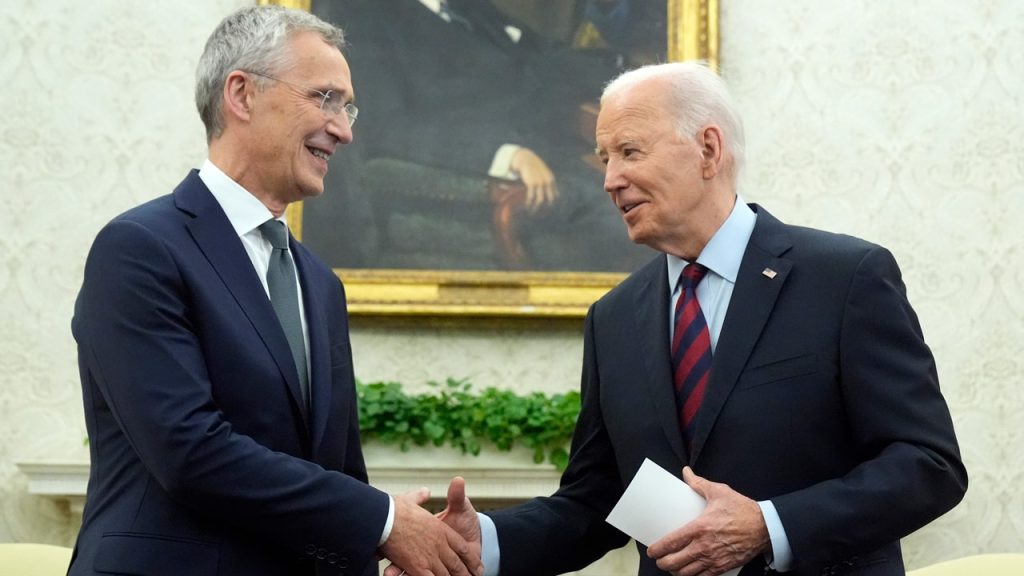NATO Secretary-General Jens Stoltenberg announced that 23 of NATO’s 32 member states are meeting the alliance’s goal of spending at least 2% of their GDP on defense. This marks a significant increase from just six nations meeting this target in 2021, reflecting growing concerns over Russia’s war in Ukraine. Stoltenberg emphasized the increased commitment of European NATO allies and Canada to their collective security, with defense spending across these countries up by nearly 18% this year, the largest increase in decades. The surge in spending comes amidst rising tensions in Europe and concerns about potential future conflicts.
During a visit to the White House, Stoltenberg met with President Joe Biden, who praised the strength and unity of the alliance under Stoltenberg’s leadership. Biden highlighted the successful deterrence of Russian aggression in Europe and efforts to strengthen NATO’s eastern flank. Stoltenberg stressed that NATO members are investing in U.S.-made military equipment, benefiting both U.S. security and job creation. The allies’ commitment to defense spending targets reflects a shared recognition of the threats posed by the conflict in Ukraine and other potential security challenges.
The upcoming NATO summit in Washington is expected to address the alliance’s response to the conflict in Ukraine and explore ways to support the country. Stoltenberg highlighted NATO’s efforts to streamline Ukraine’s eventual membership process, providing updated arms and training to the Ukrainian military. The summit will focus on enhancing support for Ukraine in the face of ongoing attacks from Russia. The possibility of Ukraine joining NATO has been a contentious issue, with Putin expressing strong opposition and viewing it as a direct threat to Russia’s interests.
Following Russia’s invasion of Ukraine in 2022, European NATO members have significantly increased their defense spending to meet the 2% GDP target. Historically, defense spending declined in Europe after the collapse of the Soviet Union, but Russia’s aggressive actions have prompted a reassessment of security priorities. The summit will provide an opportunity for NATO leaders to discuss the alliance’s response to the conflict in Ukraine and consider measures to deter further aggression and strengthen European defense capabilities.
Despite diplomatic efforts to pursue peace, including the recent conference in Switzerland, the conflict in Ukraine continues to escalate, with Ukrainian forces facing formidable challenges in repelling Russian advances. The summit will address the urgent need to support Ukraine and prevent further destabilization in the region. Stoltenberg emphasized the importance of NATO membership for Ukraine as a means to ensure lasting peace and security in the region. The alliance’s commitment to collective defense and support for Ukraine reflects a shared commitment to upholding democratic values and preserving stability in Europe.
As NATO continues to adapt to evolving security threats, including the conflict in Ukraine, member states are reaffirming their commitment to collective defense and mutual support. The upcoming summit in Washington will provide an opportunity for leaders to discuss strategic priorities, enhance cooperation, and demonstrate solidarity in addressing regional challenges. Stoltenberg’s visit to the White House underscored the strong partnership between NATO and the United States, as both allies work together to strengthen security and uphold shared values in an increasingly complex global environment.


